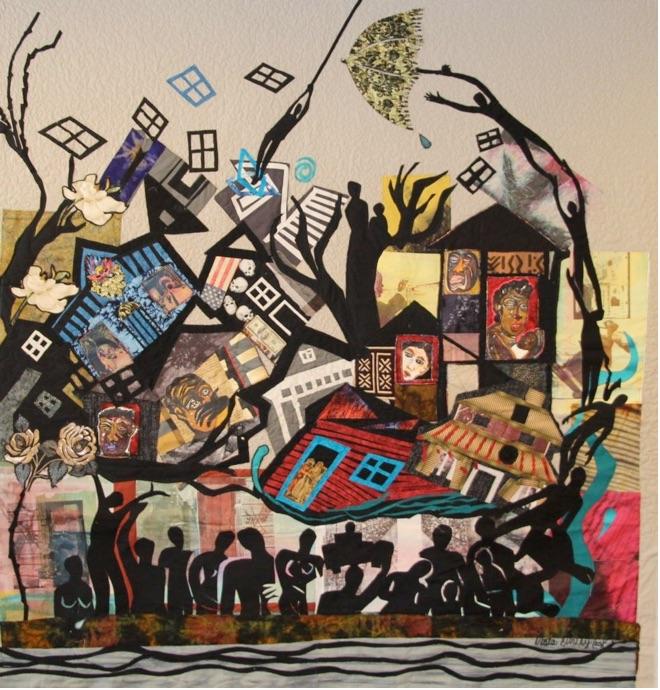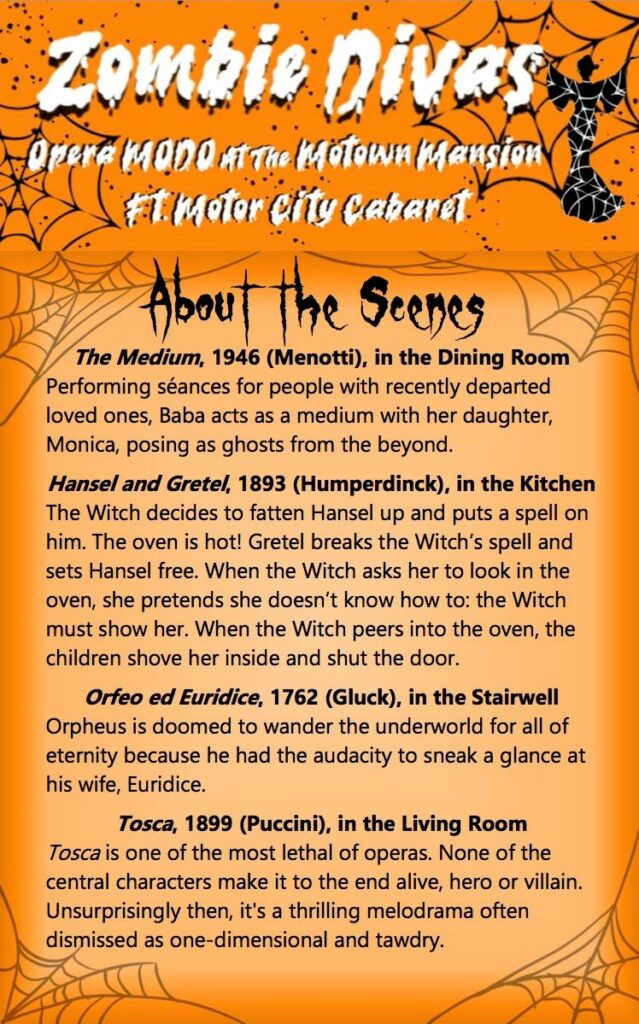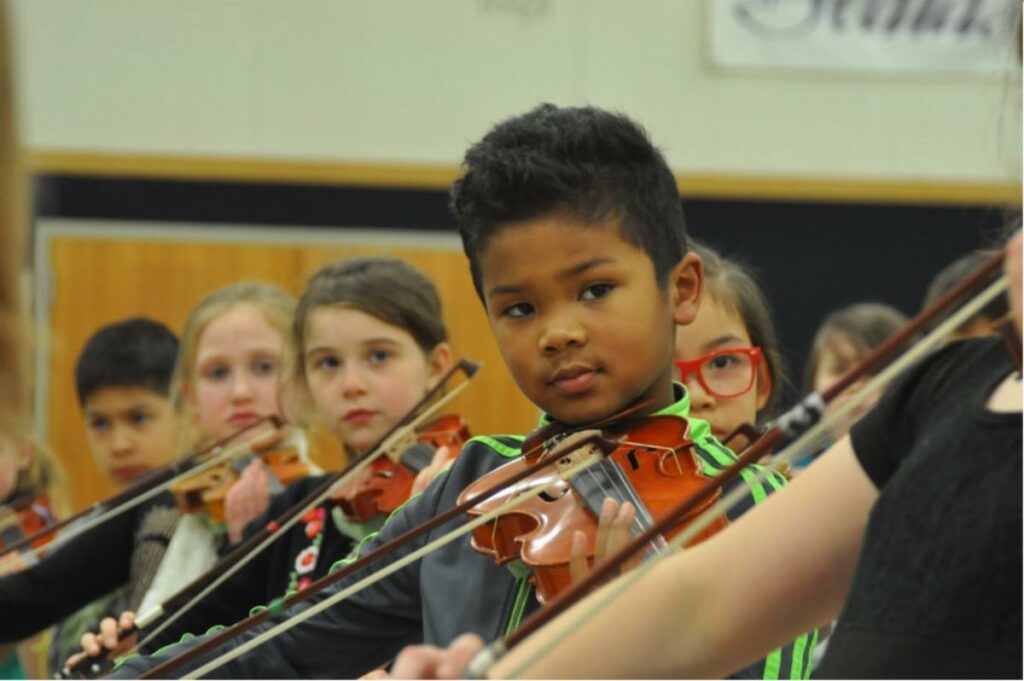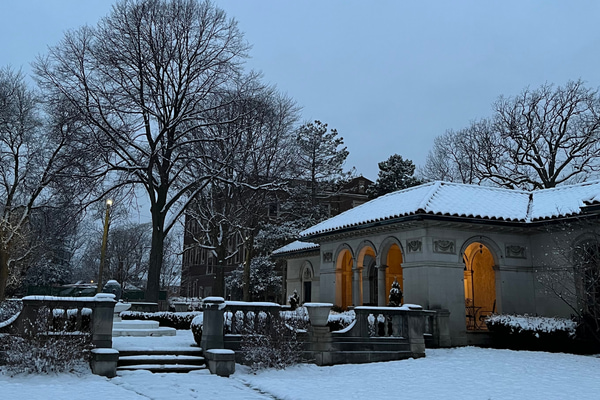Season’s greetings from all of us at WolfBrown! Once again, we asked the WolfBrown team to reflect on a particularly memorable cultural experience from the last year to share with our readers. From experiencing the arts through the eyes of children to seeing productions that spark conversations months later, you’ll find just a few of the experiences that stood out in this holiday issue.
Happy holidays, and best wishes for a wonderful 2020!
Contributions
Dr. Thomas Wolf, Santa’s Suit was not the Only Thing That Was Red
Alan Brown, Zombie Divas
Joe Kluger, The Truth Will Set You Free
Dr. Dennie Palmer Wolf, Juneau Alaska Music Matters
Victoria Plettner-Saunders, Memories at the Met
Dr. Steven Holochwost, Opera: Irrational Entertainment for Irrational People
Jane Culbert, And Still We Rise – A Pop-Up Museum Exhibition
Alan Kline, Come From Away and Sharing a Theatrical Experience
John Carnwath, Sharing the Magic of Theatre
Henry Clapp, Performing Annelies
Megan Friel, Annabeth Rosen: Fired, Broken, Gathered, Heaped

Santa’s Suite Was Not The Only Thing That Was Red
By Dr. Thomas Wolf
This year, I have been doing collaborative presentations based on my new book, The Nightingale’s Sonata, that include narrative, historical photographs, and live music. I find myself often required to be a jack of all trades. I read a script, run a PowerPoint, and at times am required to turn the pages of the pianists’ music. Recently, I came across an article about the role of page turners and it brought back many memories. Page turning is a skill that is fast disappearing as more and more pianists (including some I have been working with) are abandoning printed music and using screens which they can control with a foot pedal. But at age 74, I have all sorts of recollections about my role as a page turner and since at least one of them revolves around a holiday concert I offer the recollection here.
First, it is probably relevant to state that I come from a family of musicians that included four professional pianists so I was inducted into the page turner fraternity at a very young age. I was good enough to graduate from family members to professionals on big stages and I learned the idiosyncrasies of each player. Some liked their pages turned early – a couple of measures or sometimes three or four before coming to the end of the page. Others liked me to wait until the very last note. Some marked places in the music where they could turn themselves so I would not be a distraction. Others wanted me to carry their music on and off the stage. I learned how important it was to talk in advance about whether or not repeats in the music would be observed necessitating my turning back a page or sometimes multiple pages (always a tricky operation). Then there were the stage antics one had to get used to. The pianist Rudolf Serkin, my brother’s teacher, had what I would call a round-house left and when the music indicated a loud bass passage, I would be sure to stay out of the way of his left arm rotating into my space. Another pianist, Seymour Lipkin, liked having his music lie flat within the piano case making it virtually impossible for me to see it from a sitting position (I kind of squatted).
But perhaps the oddest experience I had was turning pages for my brother Andy at a holiday concert. As we were walking on to the stage, he handed me a towel. “Oh, I almost forgot,” he said, “Here.” And that was all — no explanations as he and his colleagues took their bows. I remained puzzled throughout the first two movements about why I was holding a towel. Perhaps Andy was worried he was going to sweat. But he didn’t seem at all hot or sweaty. Then came the finale, with several glissandi requiring Andy to extend his thumb to a lower note and pull it quickly over all the white keys going up the scale. And then I realized what the problem was. Andy had cut his thumb earlier that day and while the cut had closed up somewhat, it did not stay closed during the first glissando. “Wipe,” he called out and I dutifully dodged his hands while I cleaned the blood off the keys without sounding the notes, an accomplishment that I am proud of to this day. When another glissando came around, the process was repeated…and so on until the end of the piece. When the work was finished and Andy was taking his bows, I thought about whether I should wipe the keys one more time and I decided not to. It would distract from the musician accolades. And given that it was a Christmas concert, the red keys seemed appropriate.
Zombie Divas
By Alan Brown
Someone dies at the end of nearly every opera. But, of course, on Halloween they come back to life for a gory and glorious night. Such was the premise of “Zombie Divas” – our micro-placemaking/opera education event on a cold and rainy Halloween night in Detroit. The brain child of Danielle Wright, the founder of Opera MODO, the opera-themed haunted house experience went off without a hitch thanks to a small legion of volunteer singers, kid wranglers and a professional stage manager.

Trick-or-treaters were divided up into groups of eight to ten and briefed on the experience they were about to have. First, they gathered around the candle-lit dining room table which had been set as the séance scene from Menotti’s opera The Medium. Then they moved into the kitchen, where Hansel and Gretel tricked the witch into opening the oven, where she met a swift demise. Orpheus, doomed to the Underworld for having glanced at his wife, Euridice, escorted the group to the living room, where Tosca, unconscious and bloodied from her fall, came back to life just long enough to sing a few lines of “Vissi d’arte,” and then stabbed herself with a stage knife, much to the horror of all.
The entire experience lasted about seven minutes. At the end, each of the 350 children and caregivers got a piece of candy and a printed program listing the opera scenes they experienced. On the way out, I overheard a five-year-old fairy princess ask, “Mommy, were those real singers?” Which was all the evaluation data I needed to recommit to hosting the event next year.
In the future, we hope to commission composers to write the “next” arias that formerly deceased (zombie) opera characters come back to life to sing. My hope is that it will grow into a fun and successful fundraiser for the opera company. In the meantime, we’re having a ball deconstructing barriers and welcoming the community into our home.
The Truth Will Set You Free
By Joe Kluger
Although I attended a wide range of professionally related arts events this year, I was also fortunate to tag along to some that were “All in the Family.” I joined my wife, Susan Lewis, for several wonderful performances she was covering as an arts and culture reporter for the jazz and classical radio station WRTI, including Opera Philadelphia’s The Love for Three Oranges and The Philadelphia Orchestra’s semi-staged production of Candide. We also saw the new Lincoln Center Theater musical In the Green, about the life of Hildegard von Bingen, directed by our daughter-in-law Lee Sunday Evans.
The most thought-provoking performance we saw, however, was Judgment Day, an adaptation of German playwright Odon von Horvath’s 1937 drama at the Park Avenue Armory, for which our son Daniel created the original music and sound design. Set in pre-World War II Germany, the play portrays how a small-town community reacts to a train accident that kills 18 people. With the cause of the accident clear to the audience, the playwright focuses not on achieving community consensus as to the truth, but on the inconsistency, hypocrisy and self-interest with which the community reacts to the tragedy. New York Times critic, Jesse Green, noted, “What interests Horvath is the way truth, if denied sufficiently, in essence disappears as a category.” In a program note, Christopher Shinn, who wrote the English adaptation, observes that “the two hardest things for writers to see are what’s happening in front of them and where their society is headed.” He believes Horwath was prophetic in shining a light on the guilt of communities that remained silent in the face of German Fascism in the 1930s and thinks the play is equally relevant today.
Juneau Alaska Music Matters
By Dr. Dennie Palmer Wolf
My peak performance doesn’t unfold in a crimson and gold theater or a marble gallery. Instead, imagine an elementary school with the afternoon half-light of Alaska autumn through the windows, the opening page of “The Russian Music Box,” a widely performed introductory string orchestra piece, up on the stand at JAMM (Juneau Alaska Music Matters).

Jemima, a ninth-grade mentor, and Arlo, a fourth-grader, face the black and white flock of notes and begin the shared work of taking on a new piece. They clap the rhythm, then clap it again, adding in the chanted note names. Arlo plays the first several measures pizzicato, trying to make his hands do what his eyes and ears see. Jemima is steadily patient and Arlo will not give in, tackling the opening measures, skirmishing with the same leap from B to F sharp over and over, taking a deep breath and then lifting his instrument to try again. In the background, a master teacher, Lorrie Heagy, speaks, “You have that first measure, it is just the second one that keeps snagging up.” She helps him diagnose that he has to switch strings and change fingering all at once. “Do it a couple of times so it is in your fingers.” She is teaching him to slow down, analyze where the trouble lies, and respect the hard work of turning a boy’s fingers into a violinist’s. “Find it, get it in your fingers, keep after it.” Jemima watches intently, learning how to help another player transform “can’t” into “possible.” Together, three people jointly make music.
Roughly fifty years ago, the poet, Gwendolyn Brooks, wrote about another musician making music: the baritone, Paul Robeson, insisting that his message wasn’t the racialized “tearful tale of bale and barge” from his famous performances of “Old Man River”. Listen instead, she urged, for the fully human:
Warning, in music-words
Devout and large,
That we are each other’s
harvest:
We are each other’s
business:
We are each other’s
magnitude and bond. *
In that “ordinary” room, on a “regular” weekday, to the tune of a beginner’s string piece, that’s exactly what I hear.
Learn more about JAMM and its programs.
Learn more about Carnegie Hall’s PlayUSA, the national network of music programs to which JAMM belongs.
*Brooks, Gwendolyn. 1971. Paul Robeson. Family Pictures. Broadside Press.
Memories at the Met
By Victoria Plettner-Saunders
Over the years, my husband and I have fallen in love with New York City and try to make an annual, if not biannual, trip to Manhattan. Somehow, we’ve managed to miss going to the Metropolitan Opera every time. Since we knew we would be back again, we usually chose Broadway plays, museums and dance performances instead.
This year was the year we made it happen. We had a family gathering in Long Island and took advantage of the opportunity to spend some time in the city where we had great fun taking my husband, David’s, brother and his wife to The Met for their first opera experience ever. The performance of Don Giovanniwas everything you’d expect from the Metropolitan Opera … phenomenal sound quality, beautiful music, subtitles at your seat with eight different translations, flawless voices, intricate costumes and the exhilaration of extreme pyrotechnics when Don Giovanni descends into hell. Don Giovanni clearly has not learned from the #MeToo movement.
As a child growing up in San Diego, our house was filled with the sounds of the Texaco Radio Broadcasts live from the Metropolitan Opera every Saturday. My father would work around the house as he cranked up the radio to listen to it everywhere. It was the closest he ever got to the real Met experience. Spending a Saturday afternoon some 50 years later, fully engaged with the performance and soaked in the grandeur that is synonymous with The Met I couldn’t help but feel the joy of reconnecting with those memories and the strength of my father’s influences on the person I have become. It was a highlight of my year.
Opera: Irrational Entertainment for Irrational People
By Dr. Steven Holochwost
One of the best parts of my job is that I regularly have the opportunity to observe young people as they learn about different art forms. Depending on students’ ages, sometimes I am watching as they learn about a form of art for the first time. Such was the case on a recent day in a Philadelphia school, where a classroom of fourth-graders were being introduced to opera by teaching artists from Opera Philadelphia.
Writing in the mid-1700s, the English writer Samuel Johnson referred to opera as “irrational entertainment.” It is not hard to see why – opera requires that we set aside certain aspects of our understanding about the world. We must believe, for example, that when people are truly angry at one another, they will express that anger in song. I think for adults this may be asking too much, and that this explains, at least in part, why some adults do not enjoy opera.
Young children have fewer beliefs to suspend. For them, it may seem altogether natural that a single, rotund gentleman would be the love interest of three or more women. With such concerns out of the way, they may be better able to fully embrace the emotion, the experience, and the sensory spectacle that opera offers. That certainly seemed to be the case in the classroom I observed, in which opera made an otherwise average day extraordinary.
And Still We Rise – A Pop-Up Museum Exhibition
By Jane Culbert
This summer, I had the good fortune to be in Oak Bluffs on Martha’s Vineyard. I was walking past a building that used to be a restaurant when I noticed a sign that said And Still We Rise, an exhibit of the Mariposa Museum (located in New Hampshire). The setting was not that of your typical museum, it was more like a small gallery – large storefront windows, little climate control, one small reception desk set to the side.
What an exhibit! This exhibit of 42 beautifully handcrafted quilts, created by members of the Women of
Color Quilters Network, narrates 400 years of the African American experience (beginning in 1619). The quilts are presented in chronological order, based on the story or people represented. Some were very literal, others more abstract. For example, the image on the left is entitled “Katrina Wreckage and Tears… And Still We Rise” by Viola Burley Leak. And to the right is an image of a quilt entitled “The Little Rock Nine” by Sandra Noble. The combined impact of these colorful historical images is powerful. The artistry of each piece is stunning. See if you can bring it to your community.
Come From Away and Sharing a Theatrical Experience
By Alan Kline
January my mother and I saw the National Tour of Come From Away, a musical that tells the story of the events that transpired when 38 planes landed in the small town of Gander in Canada following the September 11 attacks. Anyone who has seen the show on tour or on Broadway will not be surprised that we were both deeply moved. Nor is it surprising that we found many of the same moments notable. Research from the UCL Division of Psychological and Language Sciences in London indicates that even audience members who don’t know each other have their hearts beat in sync when watching a musical. What stood out most about my experience with Come From Away though, may be how much I have relived parts of the experience and continued to engage with the work.


My mother enjoyed the production so much that she decided to give me the soundtrack and to take my father to see the show. This meant that a week after seeing it myself, I talked with him about his own experience. Posting on Facebook led to more conversations, as did dinner with other friends who I knew had seen it. The following month, I watched a couple of short documentaries about the production and revisited the 99% Invisible podcast episode on Gander International Airport. As a social dancer, I’ve twice had the opportunity to play and dance to “Stop the World,” a touching waltz from the show. I’ve also played the full soundtrack to three friends who all are now looking into seeing the show next year. I myself will be seeing it again next Spring when the National Tour returns to the Bay Area. I am going with my friends and their daughter who has previously only seen one live musical.
Sometimes I wonder if it’s impossible to replicate the depth of impact I experienced when my mother took me to my first musical as a kid. Come From Away engendered a very different impact, but the experience was just as deep and the continued social engagement, creative inspiration, and real life connections may be just as long lasting.
Sharing the Magic of Theatre
Let’s be honest, you don’t go to an elementary school production of Frozen Jr. for aesthetic pleasure, or to be wowed by the artistry of the performers. Ninety-nine percent of the audience at a recent Sunday afternoon performance were likely friends and family of cast members – as one would expect. I had brought my three and six-year-old children to see kids their own age perform, though we didn’t know any of the cast members personally.
What delighted me about the experience was to see, or rather be reminded of, just how effective the standard devices of the theatre are. Despite the fact that entire scenes were difficult to follow as budding thespians mumbled their lines into their collars, and, Elsa – bless her heart – was evidently tone deaf, sitting in a darkened auditorium with a few sound cues and lighting changes was enough to transport my kids to another world. When a performer pointed into the auditorium while describing the ice palace off in the distance, my kids couldn’t help but turn around – and for all I know they saw it gleaming in radiant light up there on the balcony.
I’ve studied enough theatre history to know that many of our current theatrical conventions were only developed in the nineteenth century, but my children were also intrigued by aspects of the performance that are much closer to the essence of the theatre. In this production, two different pairs of actresses played the princesses as children and adults. This was clear to my children, and they recognized that the same actresses also performed ensemble roles in other scenes. My six-year-old nonetheless wondered how they made the princesses “grow” during the performance, notwithstanding the fact there was no noticeable difference in the physical stature of the “child” and “adult” princesses. The experience of watching the actors as people and simultaneously seeing the characters they represent-cognitively distinct, but physically merged-has always been one of the most fascinating things about the theatre for me, and it’s a delight to see that magic light up someone’s eyes for the first time.
Performing Annelies
By Henry Clapp
The musical life of a choral singer is dominated by sacred music, and not just during the holiday season. The most frequently performed works use Christian texts, from the Requiem masses of Mozart and Verdi to the oratorios of Bach and Handel. Any opportunity to sing a major work that breaks this mold is memorable, and performing Annelies by James Whitbourn earlier this year with the Boston Choral Ensemble certainly fits the bill. This piece takes on the daunting task of setting passages of Anne Frank’s diary to music for voices and chamber orchestra.
It was an incredible way to re-engage with a book I had last encountered in middle school. Our rehearsal process entailed working on rhythms and pitches, but also diving into the history of the Frank family and others hiding in the annex. This discussion was enriched by hearing from a chorister who had recently visited the Anne Frank House in Amsterdam. We considered the challenges and choices facing a composer when setting such an influential text – do you attempt to embody the youthfulness and outlook of the author, or do you treat Anne’s writing as the important, revered, and devastating account of the Holocaust that we know it as today?
No other piece I’ve sung in recent memory has caused such reflection, and I hope that 2020 brings more thought-provoking music along with it.
Annabeth Rosen: Fired, Broken, Gathered, Heaped
By Megan Friel
This year, I had the honor of going to the opening of a family friend’s retrospective at the Jewish Contemporary Museum in San Francisco. Annabeth Rosen creates ceramic sculptures, often several feet tall and composed of many pieces, some of which have been broken and reconstructed, all wired back together into muscular and organic forms. Walking through the retrospective and hearing her talk about her life and creative process with the curator on stage, I was transported back to an afternoon spent in her studio in Davis, California as a child.
Annabeth had invited a group of her friends’ children to her studio for a day of art making. I remember exploring the studio alongside my cousin and sister. The studio had just the feeling that the title of the retrospective describes, her sculptures looked to be almost heaped and gathered. I wandered through the studio slowly and peered up at artwork on shelves, watching where I stepped to avoid work arranged on the ground. There was so much to see with new forms, colors, and construction methods in each sculpture. I took in all that this cabinet of curiosities had to offer. The visit expanded my 10-year-old idea of what ceramics was and opened up new possibilities. After we had explored the studio, we got to work and Annabeth spent the day welcoming us to create anything we could imagine and giving us tips and pointers to realize our visions. It was a magical day and seeing her vision displayed in over 120 objects in the white walls and bright lights of the museum was a highlight of my year.
These were just some of the many artistic highlights of the year for us. We look forward to creating many more memories with you in 2020!

